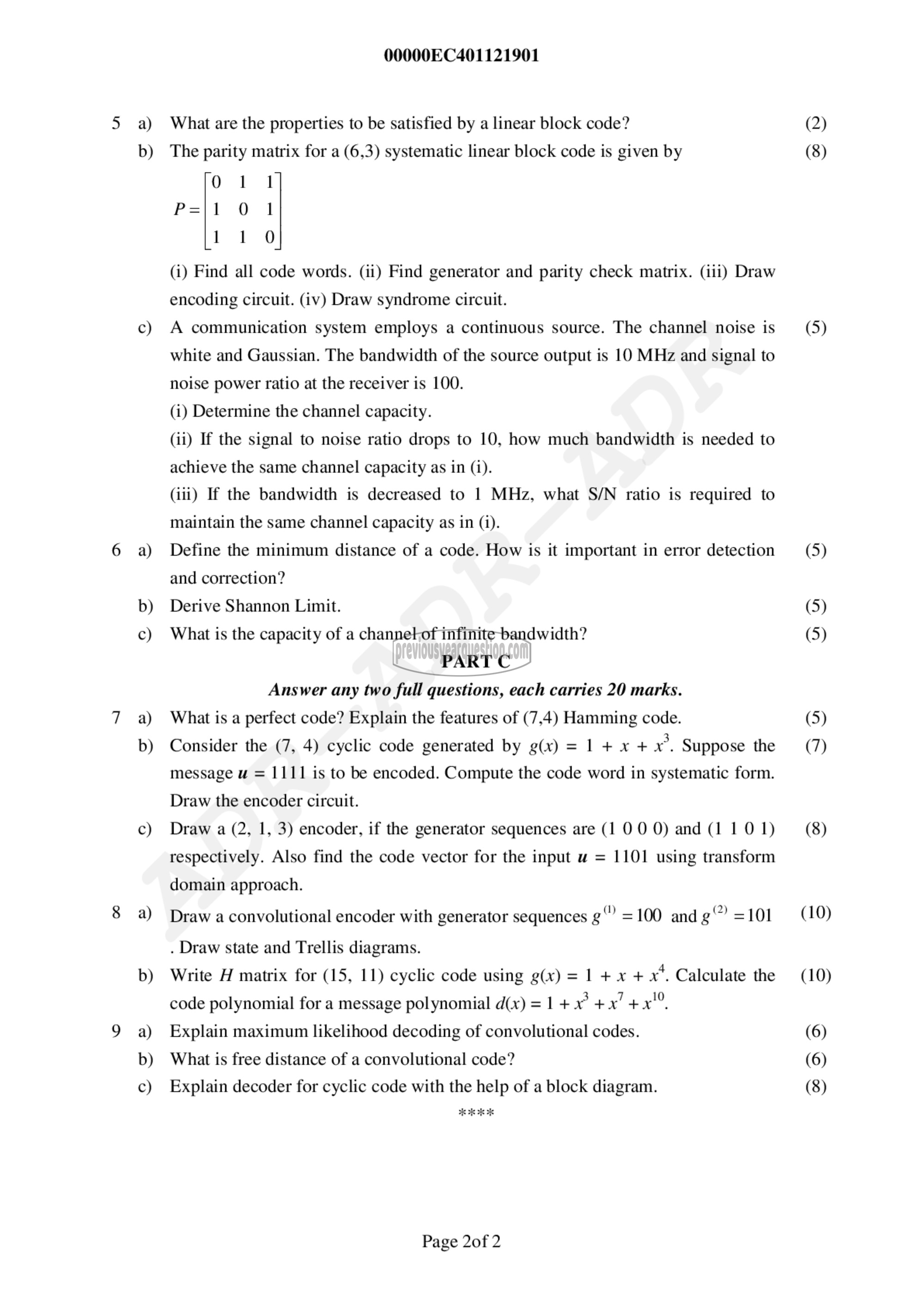APJ ABDUL KALAM TECHNOLOGICAL UNIVERSITY Previous Years Question Paper & Answer
Semester : SEMESTER 7
Subject : Information Theory & Coding
Year : 2020
Term : SEPTEMBER
Scheme : 2015 Full Time
Course Code : EC 401
Page:2
a)
b)
0)
a)
b)
0)
a)
b)
0)
a)
b)
a)
b)
0)
00000EC401121901
What are the properties to be satisfied by a linear block code?
The parity matrix for a (6,3) systematic linear block code is given by
0 1 1
=|] 0 1
1 1 0
(i) Find all code words. (ii) Find generator and parity check matrix. (iii) Draw
encoding circuit. (iv) Draw syndrome circuit.
A communication system employs a continuous source. The channel noise is
white and Gaussian. The bandwidth of the source output is 10 MHz and signal to
noise power ratio at the receiver is 100.
(i) Determine the channel capacity.
(ii) If the signal to noise ratio drops to 10, how much bandwidth is needed to
achieve the same channel capacity as in (i).
(iii) If the bandwidth is decreased to 1 MHz, what S/N ratio is required to
maintain the same channel capacity as in (i).
Define the minimum distance of a code. How is it important in error detection
and correction?
Derive Shannon Limit.
What is the capacity of a channel of infinite bandwidth?
PART C
Answer any two full questions, each carries 20 marks.
What is a perfect code? Explain the features of (7,4) Hamming code.
Consider the (7, 4) cyclic code generated by g(x) = 1 + ४ + ಸ್. Suppose the
message u = 1111 is to be encoded. Compute the code word in systematic form.
Draw the encoder circuit.
Draw a (2, 1, 3) encoder, if the generator sequences are (1 0 0 0) and (1 1 0 1)
respectively. Also find the code vector for the input ॥ = 1101 using transform
domain approach.
Draw a convolutional encoder with generator sequences ഉ = 100 and ع = 101
. Draw state and Trellis diagrams.
Write 11 matrix for (15, 11) cyclic code using g(x) = 1 +x + x. Calculate the
code polynomial for a message polynomial d(x) = 1 + vx +x"?
Explain maximum likelihood decoding of convolutional codes.
What is free distance of a convolutional code?
Explain decoder for cyclic code with the help of a block diagram.
Page 2of 2
(2)
(8)
(5)
(5)
(5)
(5)
(5)
(7)
(8)
(10)
(10)
(6)
(6)
(8)
